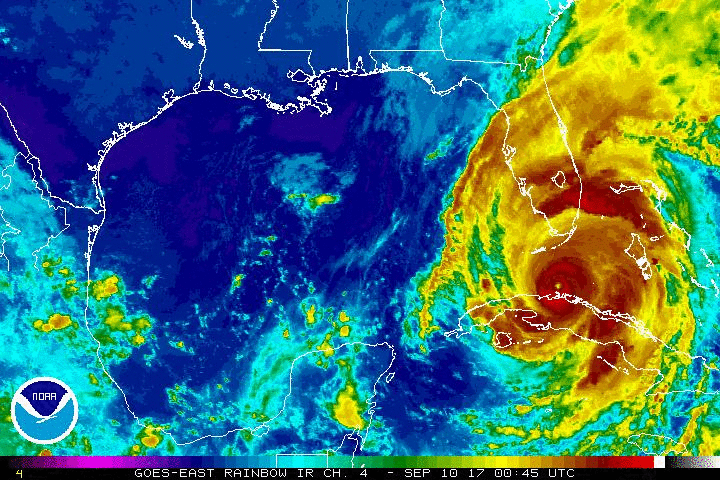With Hurricane Irma battering the west coast of Florida, experts are explaining the science behind the deadly storm. The hurricane, which has left a trail of devastation across the Caribbean, made landfall as a Category 4 storm in the Florida Keys Sunday morning, before setting out on a path along Florida’s western coast. Depending on where in the world they occur, hurricanes are also known as typhoons or cyclones. The scientific term for all these storms is a tropical cyclone, notes NASA. Hurricanes are tropical cyclones that form over the Atlantic Ocean and the eastern and central Pacific Ocean.
NASA compares tropical cyclones to “giant engines” that use warm, moist air as fuel. “That is why they form only over warm ocean waters near the equator,” it explains. “This warm, moist air rises and condenses to form clouds and storms.” This process starts the “engine” of the storm. To fill in the low pressure area, air from surrounding areas with higher air pressure pushes in. “That ‘new’ air near the Earth’s surface also gets heated by the warm ocean water so it also gets warmer and moister and then it rises,” explains NASA. With the warm air rising, the surrounding air swirls to take its place. Fed by the ocean’s heat and water evaporation, the maelstrom of clouds and winds spins and becomes larger.

No comments:
Post a Comment